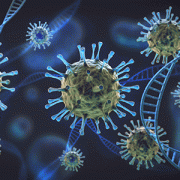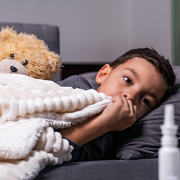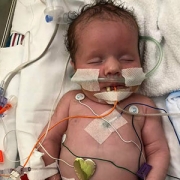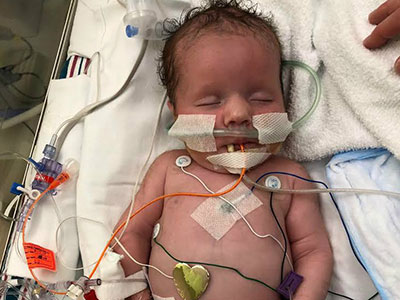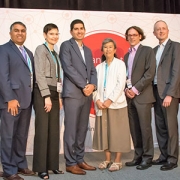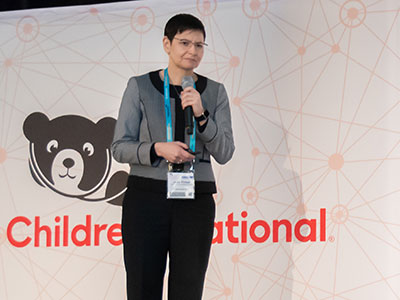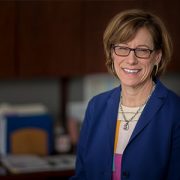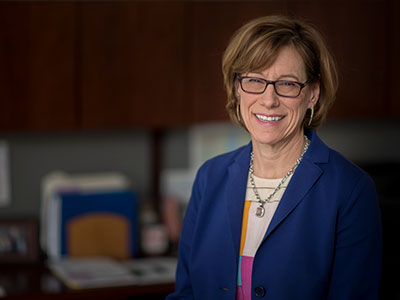AHA’s Outstanding Research Award: Three generations of pediatric cardiac excellence

Catherine Limperopoulos, Ph.D., Yao Wu, Ph.D., and David Wessel, M.D.
Children’s National Hospital is celebrating a remarkable milestone as three of its faculty members have been honored over 15 years with the American Heart Association’s Outstanding Research in Pediatric Cardiology Award. Yao Wu, Ph.D., became the latest researcher to earn the accolade for her groundbreaking work into congenital heart disease (CHD).
A research faculty member with the newly established Center for Prenatal, Neonatal & Maternal Health Research, Dr. Wu received the award specifically for her studies on the role of altered placental function, measured by advanced in utero imaging, and neurodevelopmental outcomes in toddlers with CHD.
Honored at the association’s annual meeting in Philadelphia, Dr. Wu returned to Children’s National to warm congratulations from her colleagues who had previously won the award: David Wessel, M.D., executive vice president and chief medical officer, and Catherine Limperopoulos, Ph.D., director of the new center.
“I am thrilled to pass the baton to one of our own,” Dr. Limperopoulos said. “Dr. Wu’s recognition speaks to the outstanding and innovative research happening at Children’s National among junior faculty who are focusing on advancing our understanding of congenital heart disease and its long-term neurodevelopmental outcomes.”
Why we’re excited
The prestigious award represents more than individual accomplishments; it symbolizes three generations of mentorship and collaboration at the hospital. In 2007, Dr. Wessel joined Children’s National to enhance the care of newborns across specialty services by expanding programs and research, with a focus on critically ill newborns with heart disease. He recruited and mentored Dr. Limperopoulos in 2010, who became one of his research partners and creator of the hospital’s Center for Prenatal, Neonatal & Maternal Health Research. Dr. Limperopoulos, in turn, recruited and mentored Dr. Wu, providing her with the tools to conduct advanced imaging on in-utero brains and placentas, as well as the development of children with CHD.
“Each one of us is in different phases of our careers, yet we are connected by our deep interest in advancing cardiac care for critically ill newborns,” Dr. Wessel said. “In this collaborative environment, we learn from each other to improve entire lifetimes for our patients.”
Dr. Wu said she believes in sharing scientific developments for the advancement of the entire medical community. “It was an honor to be chosen to join this esteemed club, which has a relentless focus on improving health outcomes,” she said.
Children’s National leads the way
The award winners shared five collaborations published in leading journals to contribute to the ongoing dialogue in the field and the innovative work happening at Children’s National:
- Association of Maternal Psychological Distress With In Utero Brain Development in Fetuses With Congenital Heart Disease
- Association of Prenatal Maternal Psychological Distress With Fetal Brain Growth, Metabolism, and Cortical Maturation
- In Utero MRI Identifies Impaired Second Trimester Subplate Growth in Fetuses with Congenital Heart Disease
- Altered local cerebellar and brainstem development in preterm infants
- Association of Elevated Maternal Psychological Distress, Altered Fetal Brain, and Offspring Cognitive and Social-Emotional Outcomes at 18 Months




